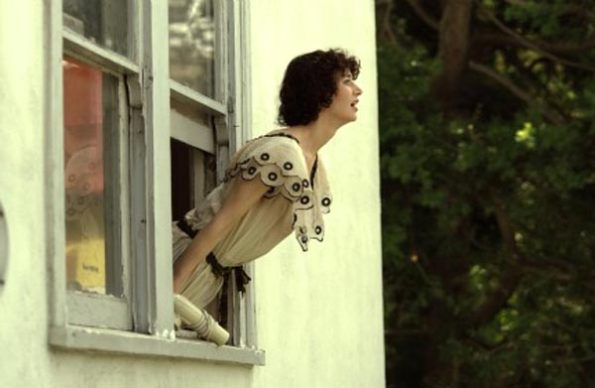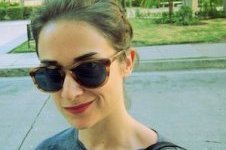Search
To search for an exact match, type the word or phrase you want in quotation marks.
A*DESK has been offering since 2002 contents about criticism and contemporary art. A*DESK has become consolidated thanks to all those who have believed in the project, all those who have followed us, debating, participating and collaborating. Many people have collaborated with A*DESK, and continue to do so. Their efforts, knowledge and belief in the project are what make it grow internationally. At A*DESK we have also generated work for over one hundred professionals in culture, from small collaborations with reviews and classes, to more prolonged and intense collaborations.
At A*DESK we believe in the need for free and universal access to culture and knowledge. We want to carry on being independent, remaining open to more ideas and opinions. If you believe in A*DESK, we need your backing to be able to continue. You can now participate in the project by supporting it. You can choose how much you want to contribute to the project.
You can decide how much you want to bring to the project.

Miranda July presents her second feature length film. A romantic comedy described as the story of what happens to a couple when they decide to adopt a kitten. But in reality The Future is a film about space. Miranda July is writer, actress, director, artist and a whole series of titles that provoke an easy link with the renaissance though maybe what we are faced with is a proposal typical of the era of the Internet.
When there is no way of referring to events for how they occur within a succession of units that we call days, months or years, we distribute them in different spaces. Each one is an autonomous capsule, and what happens in it obeys its own laws that can have something to do, or not, with the way things are represented in the neighbouring boxes.
Within these spatial brackets, from time to time, tunnels appear that enable inter-dimensional communication, for which a certain amount of time to adapt is needed and protocols of translation have to be agreed.
In this way Miranda July in her latest feature film, The Future, represents the idea of the passing of time. The different extraordinary episodes experienced by the two characters occur in a permissive synchrony that concedes the possibility of opening up vital decision-making processes in ways that would otherwise be incompatible.
Miranda July surprises once again with her latest production. A film that some have catalogued under the label of romantic comedy, but which goes way beyond what these two words can mean. A sickly cat that the couple decides to adopt narrates the dislocations that Sophie (Miranda July) and Jason (Hamish Linklater) experience when, terrified by the arrival of the new member of the family, they worry that they have exhausted any possibility of attaining the dreams that articulated their project for an ideal life.
Los Angeles is the galaxy where the discrete spatial units coincide, filling the countdown for the adoption. Within it, the distinct representations of what their lives could have been if they hadn’t decided to adopt a kitten coexist, in cyclical time.
The end of these times arrives at the hand of a feline, who threatens to force them to define a life project for the future. The arrival of PawPaw in the home, marks, therefore, the end of the worlds of exception and the beginning of a new shared story. Just as one sees in the film, the affective can only be thought of today in relation to the spatial. The allusion to the different possible roles of the one who loves and shares implies a change of scene. The stories can’t be mounted in time, because time no longer has the strength necessary to uphold them.
July is an artist who has understood, as evidenced throughout her career, the specificity of distinct places of art as much as their versatility. She now places herself as the producer of a film about love, in which she touches in the work on affection within the couple, and the way in which today the association of love can be thought of as a shared life project. It talks of the limits defined by the contemporary world for this modern idea.
Regarding the appearance of the film, July is faithful to the style that her public has become accustomed to, a clear protagonist in her photography being the ever present light of south California, that lends the story a touch of unreal objectivity. A script clearly outlined by her, true to the style of language that she constructs in the rest of her work (in her audiovisual productions as much as in the installations and performances).
But above all, Miranda July, beyond her films, is the current incarnation of the mystery of the multi-task artist, an actualisation of the myth of the all-powerful, multi-talented renaissance artist. The contemporary version, of the story of the modern man, as a project? An ideal of the self-sufficient and all-powerful entrepreneur who defies and surprises the market by refusing to fit into any one of the languages in which they hope he will settle. Is it perhaps that the construction of the character as an artist is the centre of her production?
If Sophie y Jason leap from one space to another to explore versions of affection why are they not all compatible in the same scenario; July migrates from one support to another, convinced of the specificity of each one and addressing, in the process, the centre of this system that is actually herself.

Paloma Checa-Gismero is Assistant Professor at San Diego State University and Candidate to Ph.D. in Art History, Criticism and Theory at the University of California San Diego. A historian of universal and Latin American contemporary art, she studies the encounters between local aesthetics and global standards. Recent academic publications include ‘Realism in the Work of Maria Thereza Alves’, Afterall, autumn/winter 2017, and ‘Global Contemporary Art Tourism: Engaging with Cuban Authenticity Through the Bienal de La Habana’, in Tourism Planning & Development, vol. 15, 3, 2017. Since 2014 Paloma is a member of the editorial collective of FIELD journal.
"A desk is a dangerous place from which to watch the world" (John Le Carré)